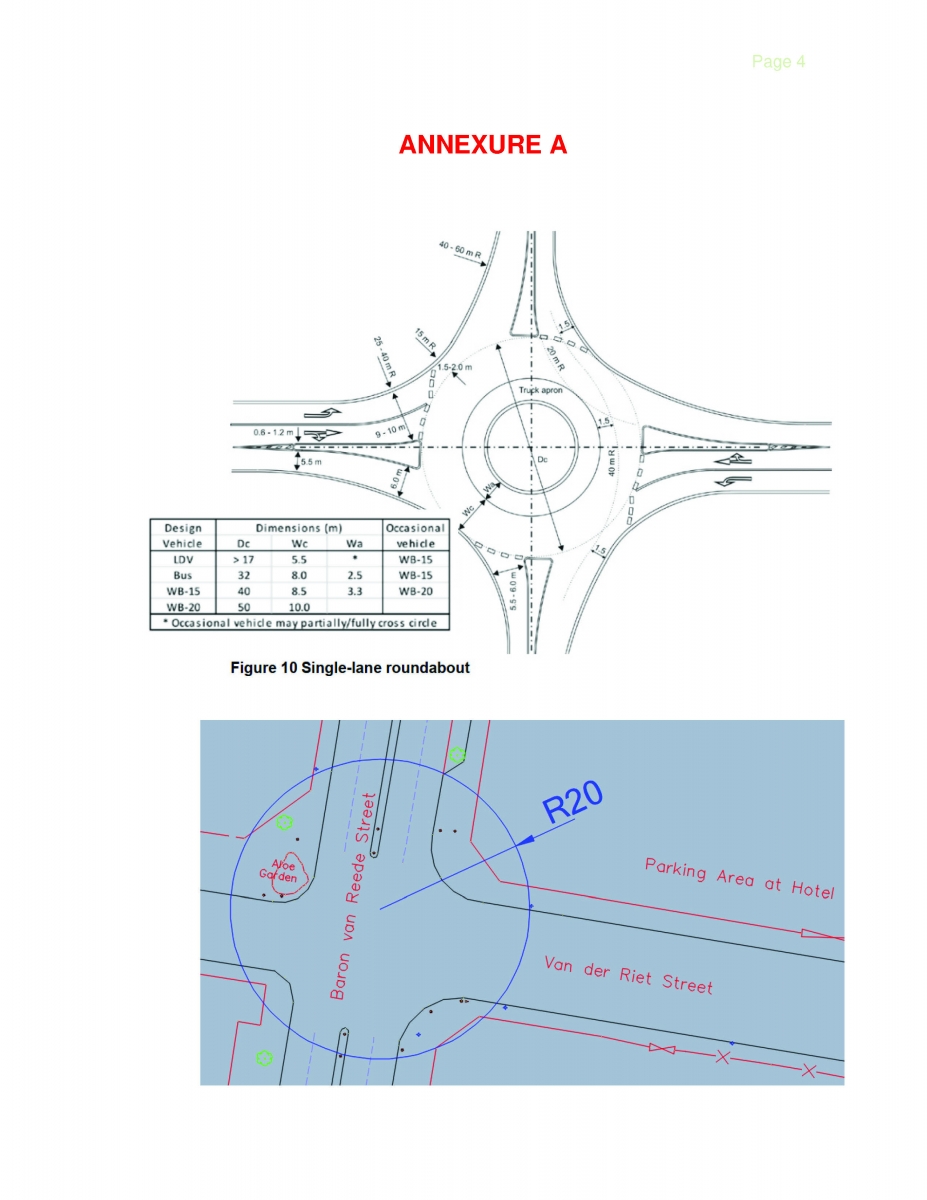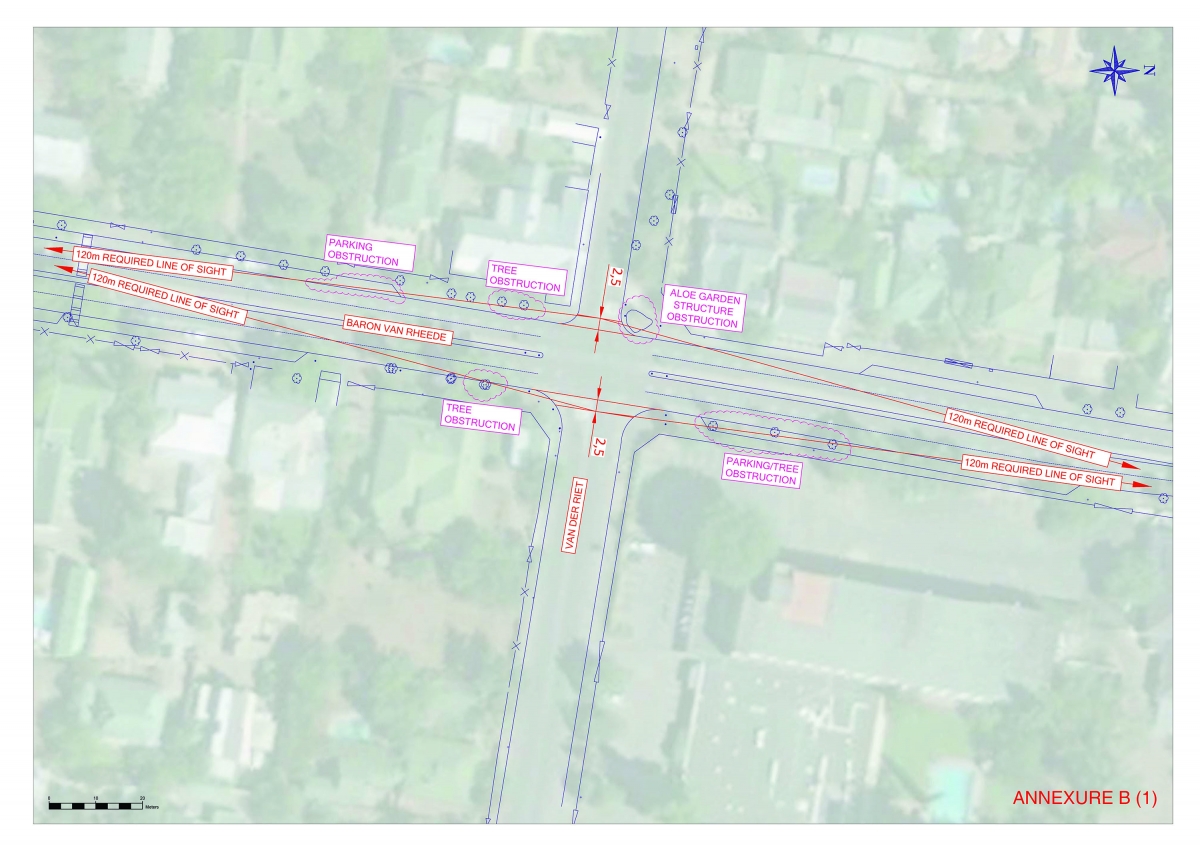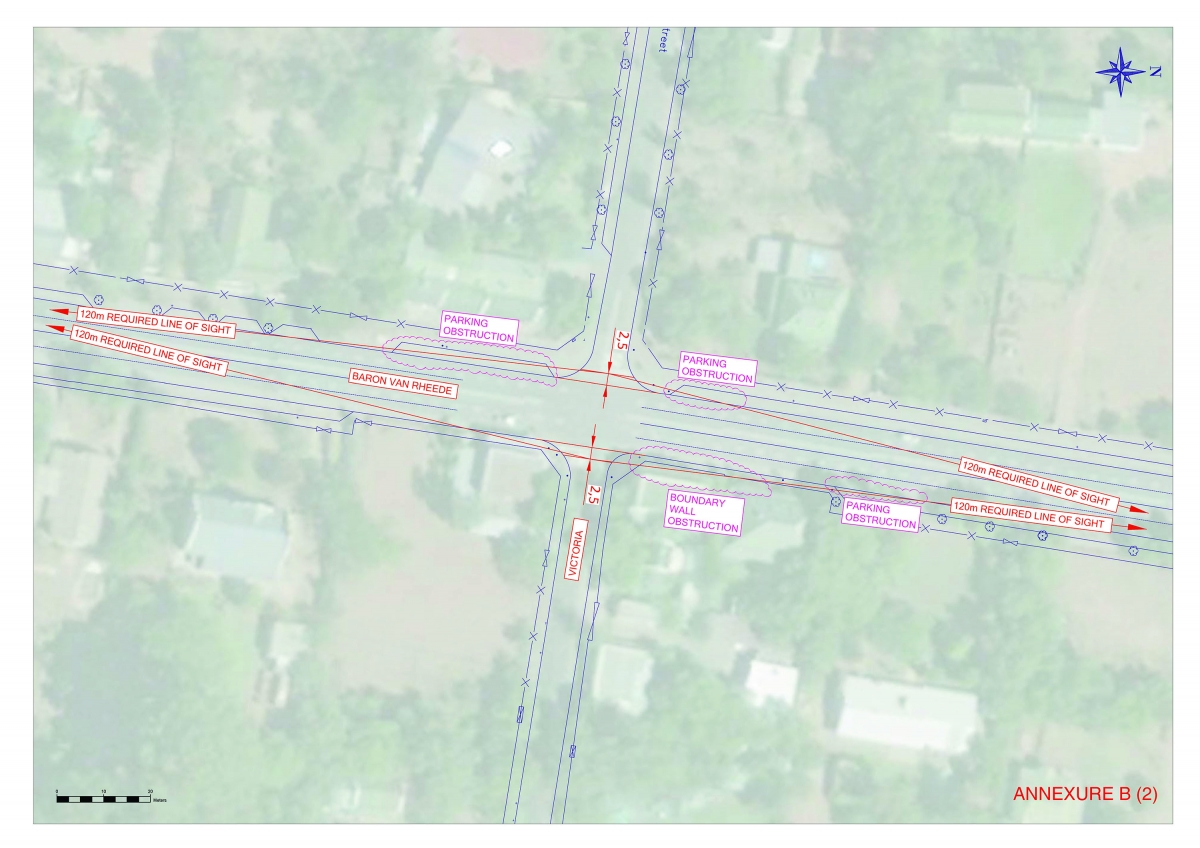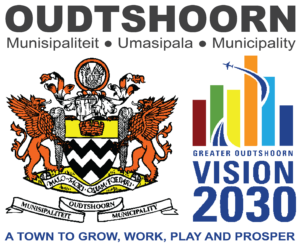Oudtshoorn, 22 August 2022 – Over the last few years, the intersection at Baron van Reede and Van Der Riet Street in Oudtshoorn, has been prone to accidents due to obstructions and traffic flow. Oudtshoorn Municipality investigated possible solutions to limit the increase of accidents due to the lack of visibility and to control the flow of traffic. A proposal was sent to an engineering company as the municipality required a fully-fledged traffic impact analysis at this specific intersection.
This analysis included vehicle count surveys, turning analysis, intersection performance analysis and road safety assessment. In terms of capacity, according to the analysis, this intersection should not be experiencing any problems as the existing layout does not justify an upgrade in terms of capacity.
The findings of the engineering report that was sent to the municipality in July 2022, indicated the following:
- Traffic Signals
In terms of TMH16, South African Traffic Impact and Site Traffic Assessment: Standards and requirements, various warrants can be met to justify traffic signals, i.e
- The average length of ANY individual queue equals or exceeds four(4) over any one hour of a normal day;
- The SUM of the average length of all queues equals or exceeds six(6) over any one hour of a normal day;
- The SUM of the average length of all queues equals or exceeds four(4) over each of any eight hours of a normal day (the hours do not have to be consecutive, but they may not overlap).
None of the above warrants is currently met for the intersection at Baron van Reede and Van Der Riet Street.
- Mini Circle/ Mini Roundabout
A mini circle is not a feasible application considering Baron Van Rheede’s function. The function of Baron Van Rheede is mobility, and mini circles are typically applied where the main function of the road is access. Mini circles also do not accommodate
approaches which include more than two lanes. TMH16 is also clear in terms of the limitation for mini circles, which indicates that mini circles may only be used on urban Class 4 and 5 roads”.
Baron van Rheede is a Class 3 road.
- Circle/Roundabout (See Annexure A)
Roundabouts are typically not pursued where the road reserve doesn’t provide sufficient space. The acquisition of additional land adds to the cost and difficulty in providing roundabouts and is often a reason for not considering roundabouts as a solution.
One of the warrants for roundabouts in terms of TMH16 is “It must be possible to construct the roundabout in accordance with the design requirements for roundabouts.”
It is unlikely that Western Cape Government (WCG) will support any permanent measure which will result in less than a 2-lane (in each direction) solution on Baron Van Rheede.
Available space was evaluated, and insufficient space exists to accommodate a single-lane roundabout (40m requirement) or a double-lane roundabout (which will probably be the design requirement by the WCG)as an even larger radius (55m +) is required.
It is therefore not possible to fit and construct a roundabout in accordance with the required design requirements at the crossing of Baron Van Rheede and Van Der Riet with the available road reserve.

Findings on investigation (See Annexures B1 & B2 indicating obstructions)
The findings mentioned in the report stated that is clear that It is clear that issues on the intersection exist relating to the shoulder site distances, which are obstructed by buildings, vegetation and a pot plant structure. Considering the sub-standard shoulder site distances, traffic safety issues are to be expected.
Considering the shoulder site distances issue above, the following strategy is recommended for implementation (in line with recommendations by WCG):
- Municipality to clear where feasible the obstructions which are obstructing shoulder sight distances
- Municipality to carefully monitor the situation going forward
- Municipality to encourage the traffic department to comprehensively capture accident information, especially the cause and exact location
- Municipality to encourage traffic to do the required law enforcement in terms of speed, and capture the relevant details
According to Mr Justin Lesch, Director of Infrastructure, all reports have clearly shown that sight distance is the major problem there. “This is caused, among other things, by the trees as well as some of the buildings. Because it is not easy to demolish a building, our engineering team were also looking at other possibilities (e.g. lane narrowing). However, this was not accepted by the province as the road belongs to the province.” Lesch further stated that the province has indicated that if the sight distances are not addressed first (and this includes the removal of trees), the province will not consider other options.


Lesch said that the municipality will now begin with a public participation process to finalize the matter.

